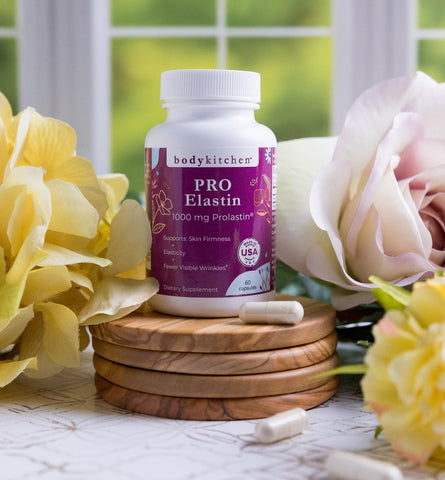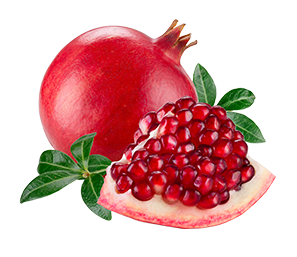What You Must Know About America’s Sweet Addiction
This is the time of year when dishes of candy and trays of treats become fixtures in our homes and workplaces, making it nearly impossible to resist the temptation.
Sugar season is in full swing. This iconic US binge festival starts with bags of Halloween candy and is curbed (temporarily) with New Year resolutions, during which we put good choices on pause in favor of consuming the year’s highest levels of processed sugar.
This is in addition to the handfuls and helpings of sweets consumed outside of our usual patterns of sugar consumption. For instance, most store-bought food staples and snack items are loaded with hidden sugar, such as ketchup, flavored yogurt, cereal, sauces and salad dressings.
How Much is Too Much?
In the US, we consume an average of 17 teaspoons of added sugar daily, and this includes adults and children, according to the Centers for Disease Control and Prevention.*
What’s the recommended daily limit of added sugar? Just 12 teaspoons.
Sugar is naturally occurring in some foods, such as fruit and starchy vegetables (fructose) and dairy (lactose). There are also naturally derived sweeteners such as honey and maple syrup. As part of a clean, healthy and balanced diet, these sugars are not unhealthy in their raw form and in small amounts. In fact, they supply glucose that cells burn for fuel to keep you energized.
The problem is the overconsumption of added sugar, especially the highly refined kind in the form of corn syrup that’s found in so many of the commercial chocolates, candy, bakery goods and beverages sold in the US.
Some natural sugar alternatives do have qualities that would make them more favorable to refined table sugar and high fructose corn syrup. For example, honey ranks lower on the glycemic index.
But the guiding principle is that consuming too much added sugar regardless of the source can open up Pandora’s box of health issues.
The Heavy Cost of Being Hooked on Sugar
It comes as no surprise to anyone that consuming processed sugar in excess is harmful to our health, leading to a range of possible issues, including tooth decay, obesity, type 2 diabetes, heart disease and high blood pressure.
A staggering 30% of American adults are overweight and 42% are obese; and in children, the rates are 16% and 19%, respectively.* And, between 2017-2020, a whopping 48% of American adults had some form of cardiovascular disease.*
Here’s something to keep in mind this sugar season: overconsuming sweets can increase your risk of catching a cold or flu virus, by triggering inflammation and suppressing immune function.**
But there’s an even greater price to pay for overly indulging in sugary delights.
Adults who are obese spend about $1,500 more in healthcare costs annually compared to normal weight adults.* And obesity is one of the top contributors to diabetes and metabolic conditions.
According to an American Diabetes Association report, people with diagnosed diabetes account for 1 in every 4 healthcare dollars spent.*
Tips to Reduce Sugar Consumption
You don’t have to kick sugar to the curb completely to be healthy and reduce your cardiometabolic risk factors. Just curbing the amount of added sugar you consume and shifting your mindset around the sweet stuff can make a major difference in how you look and feel.
Reduce gradually – Start by reducing the amount of added sugar you consume. If you normally add two teaspoons of sugar to your coffee, cut back by ¼ teaspoons every week until you reach one teaspoon. Or, if you treat yourself to a bowl of ice cream at night, scoop just a little less than your normal serving.
Shrink drink sizes – Sugary beverages are one of the major contributors to obesity. Research shows that the added sugars in soft drinks may have a direct effect on blood pressure.* If you’re not ready to give up flavored drinks during meals, cut your beverage portions in half.
Make it special – Start to think about sugary items as occasional treats. If you snack on sweets during the day, choose only one time a day to indulge in a small portion. Or, limit treats to 2-3 days per week. And take the time to savor the flavors and textures mindfully without multitasking or distractions.
Read labels – Check food labels on all processed foods to identify the amount of added sugar they contain, which appears under carbohydrates and is measured in grams (about 4 teaspoons = 1 gram). Also, read the list of ingredients. If sugar or high fructose corn syrup is one of the first three ingredients, the food is high in sugar.
Get reacquainted with natural sugars – Retrain your palate to appreciate the natural fructose in fresh and dried fruit. A small bowl of berries with a dollop of real whipped cream makes a delightful dessert, plus adds filling fiber and nutrients you won’t find in traditional desserts.
Alternatives and natural solutions Sugar addiction is extremely common and hard to kick. But it is possible to find balance by making healthier choices. For example, experiment with dessert recipes that are lower in sugar and use higher quality, more flavorful ingredients.
For a healthier dessert that’s gooey, chocolaty and delicious, try our collagen protein-packed Cookie Dough Balls. It’s a yummy cookie batter that you don’t have to bake, and the healthy fats will keep you satiated so you don’t overdo it.
And, because soft drinks and sugary beverages are believed to drive up blood pressure, try making unsweetened or lightly sweetened tea at home so that you can monitor the amount of added sugar.














